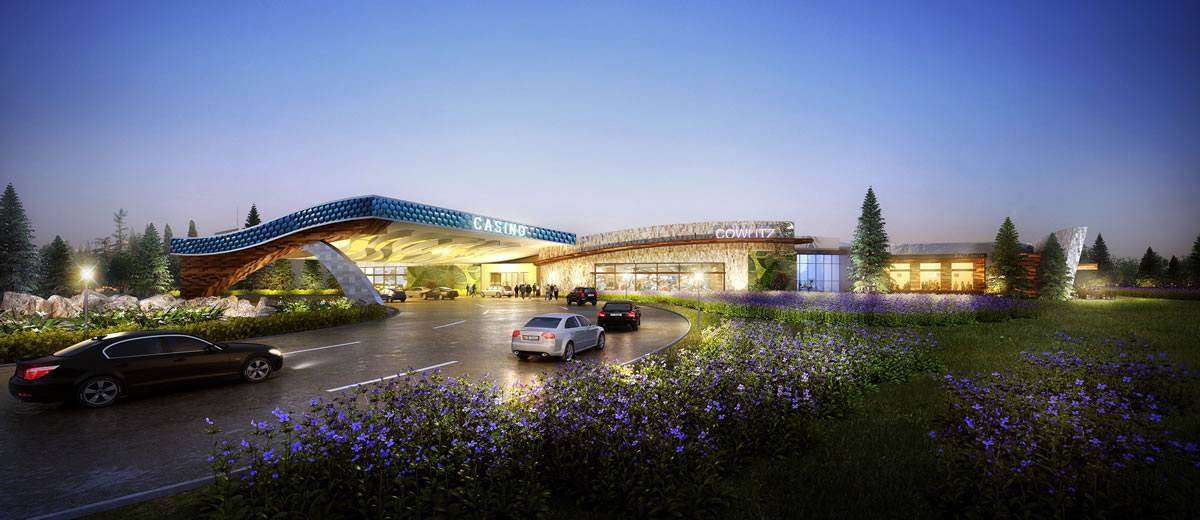Some Clark County residents are alarmed by the specter of the Cowlitz Indian Tribe’s proposed wastewater treatment plant’s injecting liquid into the ground above the Troutdale Aquifer, but officials connected to the project say the technology is widely used and proven to be safe and effective.
The issue even attracted the attention of U.S. Rep. Jaime Herrera Beutler, R-Camas, prompting her to send a letter to the U.S. Environmental Protection Agency in January, demanding it address public safety concerns about the proposed wastewater treatment system at the tribe’s $510 million casino resort being built near La Center.
Mike Ollivant has been with Parametrix, an engineering and environmental sciences firm, since the late ’70s, and he said he’s never seen a water treatment system stir as much emotion as the one being proposed by the Cowlitz Tribe.
“I can say with confidence, we’ve never had this type of concern,” he said. “I can only speculate of why there is so much — maybe it’s just misinformation.”
Ollivant, a lead engineer of water reclamation systems and principal consultant for Parametrix, the company working with the tribe, says the membrane bioreactor system the Cowlitz is planning to use is widely used around the world and in Washington.
Indeed, the cities of La Center, Shelton and Duvall, and the Tulalip and Upper Skagit tribes already use membrane bioreactor treatment plants.
Peter Contreras, a drinking-water compliance manager lead for the Environmental Protection Agency, which regulates injection systems on tribal reservations, said both of those tribal wastewater plants operate above aquifers.
“Both have been operating successfully,” he said. “Both have fluids that drain to aquifers, which is why we have regulatory authority to make sure any fluids (going into the groundwater) must meet all primary drinking water standards.”
Contreras said the EPA has lifetime oversight of injection systems and does thorough periodic inspections of them and can require corrective actions or even issue a stop order. According to him, the EPA isn’t worried about the Cowlitz’s plans.”
“We don’t feel it is cause for concern,” he said. “Membrane bioreactor systems have provided and do provide a high level of treatment for sewage wastewater.”
Bill Iyall, chairman of the Cowlitz Tribe, said the tribe has had wells drilled and has fine-tuned the plant’s designs with the EPA.
The $13.4 million wastewater plant being proposed by the Cowlitz would employ technology that turns sewage into water that meets federal drinking water standards before it’s even injected into the ground.
The bioreactor process uses microorganisms to process organic materials behind a membrane that is too fine to allow anything but clean water to pass through. As an extra step, the Cowlitz’s plant would use ultraviolet light and chlorine as disinfectants. The water will be pumped into the earth by a vadose (meaning unsaturated ground) injection well system. Then it will filter through more than 100 feet of soil before the water goes into the aquifer.
Ollivant said that all of the treatment equipment in the system is fully redundant; if any whole treatment system were to fail, a replacement would come on automatically. Also, the system has two to three days of storage in place, if need be.
What’s more, Ollivant said, bioreactor plants have been shown to treat for compounds that many other municipal wastewater plants can’t and the EPA doesn’t regulate.
“Membrane bioreactors do a very good job of removing many of the … pharmaceutical and personal care products and endocrine disruptive compounds,” he said. “There’s been studies like the one at Lake Havasu that (injecting) reclaimed water into a vadose zone does a really good job of removing those compounds.”
Parametrix estimated the plant could treat up to 400,000 gallons a day after the entire reservation is built out at some point in the future. The company estimates the average daily flow of the casino itself will be between 70,000 and 100,000 gallons per day.
The Cowlitz Tribe and the city of La Center had an agreement in place since 2011 that the tribe’s casino-resort would connect to the city’s bioreactor treatment system.
However, in September, a Thurston County Superior Court Judge ruled that the plan violated Clark County’s planning policies because the connecting sewer lines would extend beyond the city’s urban growth area.
Iyall said the tribe chose the system to be good stewards to the environment and because of the anticipated blowback.
“We know we need the most advanced system, because we knew we were going to be challenged, and we’ve been challenged on all fronts,” he said.




